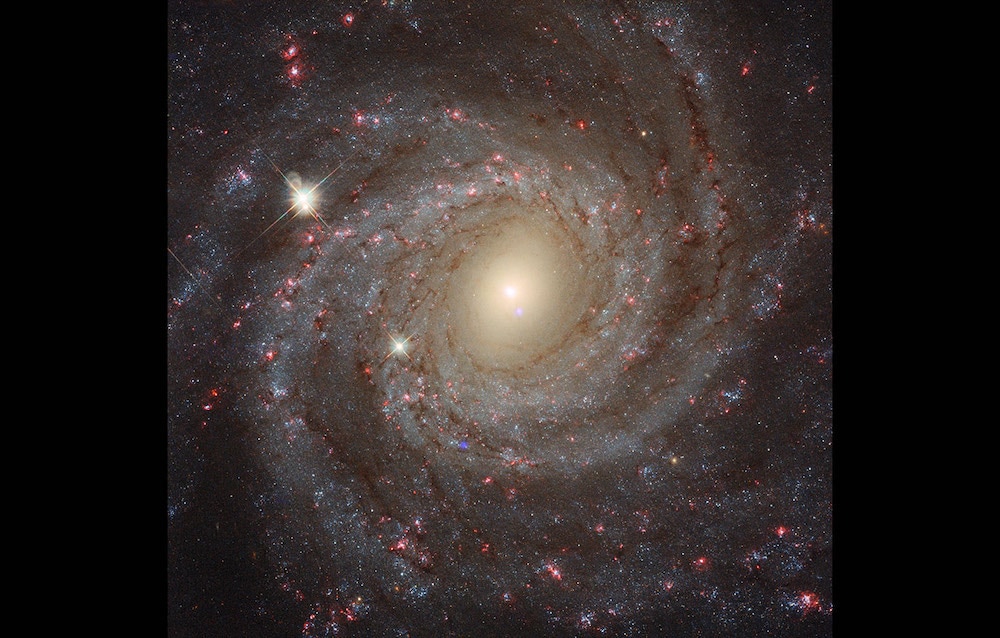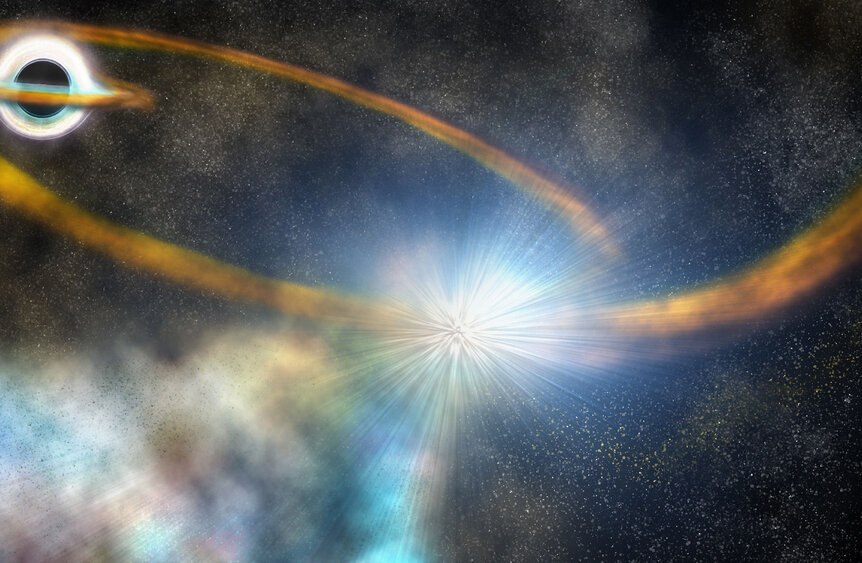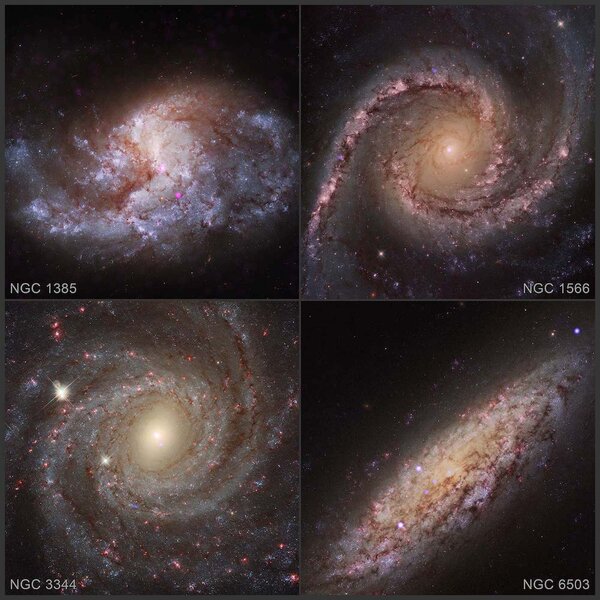Create a free profile to get unlimited access to exclusive videos, sweepstakes, and more!
How to create a massive black hole: Let it feed on a very dense star cluster
Supermassive black hole birth and growth may involve eating lots of stars.

One of the most pernicious mysteries in astronomy right now is easy to state but proving ridiculously hard to answer: How do supermassive black holes form?
These are enormous black holes, called supermassive black holes, some with millions or billions of times the mass of the Sun, and it looks like every decently sized galaxy in the Universe has one in its core. The thing is, we see them in galaxies at the very edge of the observable Universe, which means we see these galaxies when they were less than a billion years old. That in turn means these black holes form fast, in fact too fast according to most models. It's really hard to feed them rapidly enough to get them so big so soon after the Universe itself as born.
There's been a lot of work on this topic, and one of the more workable ideas is that some black holes are born kinda sorta massive, maybe 100,000 times the Sun's mass, and then they grow from there. These are called seed black holes. They may form in different ways; one avenue of active research is seeing if they can form directly from the collapse of gas clouds as a galaxy itself forms.
Another way is being investigated as well. Many big galaxies have large clusters of stars in their cores, called nuclear star clusters. These can be truly enormous clusters containing millions of stars, and range in total mass of a hundred thousand to tens of millions of times the Sun's mass, yet they're only a couple of dozen light years across. So they're not just massive, they're dense. Stars are packed together way more tightly than they are, say, near the Sun. The nearest star system to us is over four light years away. In a nuclear star cluster there would be tens of thousands of stars that close!
The star clusters themselves may form in the centers of galaxies, or they may be created when globular clusters, themselves dense balls of stars, fall to the centers of galaxies. Either way, theoretical models — that is, looking at the physics of gravity and stars and black holes, and seeing how they all interact — predict that nuclear star clusters can make and grow seed black holes pretty rapidly.
When massive stars die, they explode, blowing away their outer layers, while their cores collapse to form black holes. If the cluster is massive enough — an important criterion — these will fall to the center of the cluster, merge, and form bigger black holes. As stars pass close to this new black hole they can get torn apart and eaten — about half the star's mass gets ejected and half falls into the black hole — or they can fall toward the black hole, get captured by it through complicated gravitational processes, and get eaten more efficiently.
Either way, stars get et. The black hole grows.
The mass of the cluster is critical here. The math predicts that above a certain mass the cluster inevitably makes a black hole. It's hard to measure the mass of a cluster directly, but there's an indirect way: The more massive a cluster the bigger the spread of star speeds inside the cluster — ones at the outer parts move slowly, and ones toward the center move pretty rapidly — what astronomers call the velocity dispersion. This is a measurable quantity from observations, and the critical velocity dispersion in this case is about 40 kilometers per second.
So a team of astronomers looked at 108 big nearby galaxies with nuclear star clusters that had both Hubble Space Telescope observations to get their velocity dispersions, and Chandra X-ray Observatory observations to look for black holes [link to paper]. As gas piles up outside the black hole it heats up and emits X-rays, and that can be used to see if a black hole is there.
Long story short — the observations and analysis are a bit tricky — they found that galaxies with clusters above that 40 km/sec threshold have black holes in them at twice the rate of clusters with a lower velocity dispersion, and therefore a lower mass.
This is in line with what those theoretical models predict, which is heartening. That means this is likely a viable way to make seed black holes!
Also, this method of making big black holes is independent of distance. We do see enormous black holes forming when the Universe is young, so it's possible that's tied with how galaxies themselves form. But it's also possible some black holes grow more slowly, even after the galaxy itself has matured and all that available gas gets used up to make stars. That means forming black holes directly from collapsing gas is much, much harder as the Universe ages.
The beauty of forming them in nuclear star clusters, though, is that this could work when the Universe was young or much later as well. It could still be working today; in fact these nearby galaxies with nuclear star clusters are still adding mass to their black holes right now.
So this all fits together, which is neat. More observations would help; getting better statistics is always nice, and it would be beneficial to be able to measure just how efficient it is for these black holes to tidally capture stars.
But the good news is that this is a promising avenue to travel down; nuclear star clusters do seem to be black hole nurseries, and that gives us another way to make these monsters in galactic middles.
Our home Milky Way galaxy has a supermassive black hole in its core, called Sgr A*, and we don't really know how it formed. But we do know a lot of galactic characteristics depend on that black hole, on how they formed and affected each other, so figuring out how they are born and grow is key to figuring out why galaxies are the way they are. Including our own.





























